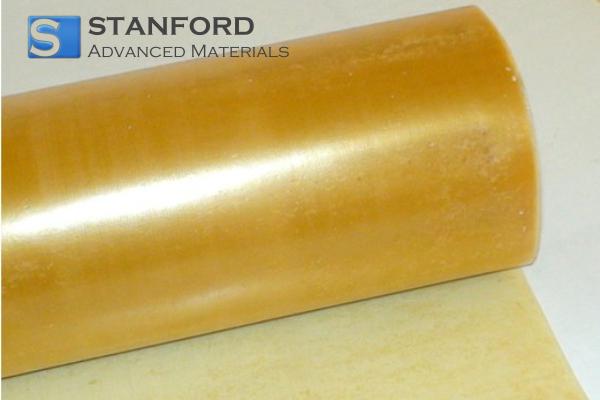Calcium: Element Properties And Uses
Description
Calcium is an essential chemical element that is vital for biological processes and industrial operations. This post examines its characteristics, general applications, preparation methods, and related industrial products.
Introduction to the Element
Calcium is a chemical element with the symbol Ca and the atomic number 20. It is an alkaline earth metal and is placed in group 2 of the periodic table. Calcium is vital for biological processes including muscle contraction and bone formation. It is the fifth most abundant element in the Earth’s crust and is typically found in compounds such as calcium carbonate and calcium phosphate.
Chemical Properties
Calcium is highly reactive and readily forms compounds with oxygen and other non-metals. When it reacts with water, it produces calcium hydroxide and hydrogen gas. In its pure form, calcium is soft and can be easily shaped. When exposed to air, it ignites with a bright red flame and produces calcium oxide. Calcium compounds, particularly calcium carbonate, are used as building materials and in various industrial processes.
When exposed to oxygen, calcium forms a thin, protective oxide layer. It does not react with nitrogen, but it reacts with acids to form calcium salts. Its reactivity decreases down the periodic table; consequently, it is less reactive than elements such as magnesium.
Physical Properties
Calcium is a soft, silvery-white metal which has a lower density than many other metals. The table below provides an overview of several important physical properties of calcium:
|
Property |
Value |
|
Atomic Number |
20 |
|
Atomic Weight |
40.08 g/mol |
|
Density |
1.54 g/cm³ |
|
Melting Point |
842°C |
|
1484°C |
|
|
Electrical Conductivity |
High |
|
Appearance |
Silvery-white, shiny metal |
|
Hardness |
Soft (it can be cut with a knife) |
Additional information is available at Stanford Advanced Materials (SAM).
Common Applications
Calcium is used in numerous ways, in both biological systems and industrial applications:
- Biological Applications: It is essential for the health of bones and teeth, muscle function and nerve transmission.
- Industrial Applications: Calcium carbonate is used as a building material and in the production of lime. Calcium salts are used in fertilisers, food additives and water treatment.
- Other Uses: Calcium is used in the manufacture of alloys, particularly in steel production to improve hardness and durability.
Preparation Methods
Calcium can be produced by various methods:
- Electrolysis of Calcium Chloride (CaCl2): An electric current is passed through molten calcium chloride, thereby decomposing it into calcium metal and chlorine gas.
- Reduction of Calcium Oxide (CaO) with Aluminium: Calcium is obtained by the reduction of calcium oxide with aluminium at high temperatures.
Related Industrial Products
Calcium constitutes a major component in several industrial products:
- Cement and Lime: Calcium compounds such as calcium carbonate and calcium oxide are used in the manufacture of cement and lime.
- Steel Production: Calcium is employed in steel production to remove impurities and to increase the strength of the final product.
- Plastics and Rubber: Calcium salts, such as calcium carbonate, serve as fillers in the production of plastics and rubber.
Frequently Asked Questions
What are the main biological functions of calcium?
Calcium is crucial for the formation of bones and teeth, muscle contraction and nerve transmission. It also plays a role in blood clotting.
How is calcium obtained from natural sources?
Calcium is primarily extracted from limestone and other calcium-containing minerals that are processed industrially.
Is pure calcium dangerous?
Calcium metal is reactive and can be dangerous if it comes into contact with air or water. In its compound forms it is generally safe and is widely used in various industries.
Can calcium occur in water?
Yes, calcium is commonly present in natural water sources, mainly as dissolved calcium salts such as calcium carbonate.
Which industries utilise calcium the most?
The construction, steel and agricultural industries are among the largest users of calcium in various forms, including calcium carbonate, calcium oxide and calcium salts.

 Bars
Bars
 Beads & Spheres
Beads & Spheres
 Bolts & Nuts
Bolts & Nuts
 Crucibles
Crucibles
 Discs
Discs
 Fibers & Fabrics
Fibers & Fabrics
 Films
Films
 Flake
Flake
 Foams
Foams
 Foil
Foil
 Granules
Granules
 Honeycombs
Honeycombs
 Ink
Ink
 Laminate
Laminate
 Lumps
Lumps
 Meshes
Meshes
 Metallised Film
Metallised Film
 Plate
Plate
 Powders
Powders
 Rod
Rod
 Sheets
Sheets
 Single Crystals
Single Crystals
 Sputtering Target
Sputtering Target
 Tubes
Tubes
 Washer
Washer
 Wires
Wires
 Converters & Calculators
Converters & Calculators
 Write for Us
Write for Us




 Chin Trento
Chin Trento



